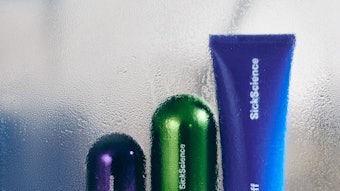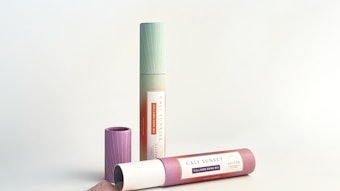This is an abridged version of an article published in the December 2011 issue of Cosmetics & Toiletries magazine.
- A key focus for good shampoos is the initial proper selection of the surfactant system.
- In order to differentiate products and provide multiple benefits in one product, several niche markets have evolved, with products providing different benefits based on different ingredient combinations.
- The trend to move away from synthetic surfactants will continue to reinforce consumer awareness that such replacements exist, putting pressure on commodity market brands to look for alternatives.
The primary purpose of a shampoo is to clean the hair and scalp; all other attributes such as styling, conditioning split ends, adding shine and improving combability are accomplished by grooming tasks and used for claim purposes to differentiate a product from the competition. Shampoos are different from other cleansing products in that they must function at relatively low, mild temperature conditions; provide instant foam; and leave no residue after rinsing. With regard to their delivery to hair, shampoos must have a viscosity and rheology that allows them to stay on the palm of a consumer’s hand for efficient transfer. Lastly, surfactants and other additives must be mild to the skin and eyes.
Key Components: Surfactants
Hair cleansing compositions typically comprise combinations of anionic and nonionic surfactants, however, an ideal cleansing hair care formulation also should contain conditioning fatty cationic actives for improved deposition. Thus, a key focus for good shampoos is the initial proper selection of the surfactant system. As is well-known, surfactants are based on different chemistries and while all cleanse the hair, each offers strengths and weaknesses. Of the more popular key types of surfactants are alkyl and alkyl ether sulfates, olefin (ether) sulfonates, sulfosuccinates, fatty alkanolamides, amine oxides and betaines.
Alkyl and ether sulfates: This class is the workhorse of the shampoo category, with the most notable materials being sodium and ammonium alkyl (or PEG-alkyl) sulfate. In product development, it is important to know that with this class of surfactant, solubility increases as the temperature is increased. Although alkyl and alkyl ether sulfates are generally safe for skin and hair use, they can cause skin irritation if they remain on the skin for too long. They have good foaming characteristics but the foam collapses quickly; thus, this class is typically combined with other foam-boosting surfactants such as the alkylamidoalkyl betaines (cocoamidopropyl betaine), or alkanolamides to increase viscosity.
Olefin (ether) sulfonates: Similar to sodium lauryl sulfonate, olefin (ether) sulfonates are the second most widely used surfactants in shampoos. They have similar foam characteristics to alkyl and ether alkyl sulfates, more water solubility (high concentrations) than sulfates, and are more stable over a wide pH range.
Sulfosuccinates: Based on carboxylate and sulfonate groups, sulfosuccinates provide good foaming properties and reduce the eye and skin irritation of alkyl ether sulfate systems. Fatty alkanolamides: Fatty alkanolamides are classified as good foam and viscosity enhancers, specifically with alkyl ether sulfates. This class of materials has the potential to generate nitrosamines—a class of chemical compounds that can be carcinogenetic.
Amine oxides: Amine oxides are best known for their good foaming characteristics and more stable lather at acidic pH levels. Betaines: Betaines are classified as amphoterics having low irritation and good compatibility with most surfactants and quaternary conditioners. However, their use at low pH levels should be avoided because amphoterics can become positively charged and increase irritation. Alkyl-substituted betaines function better in acidic mediums, requiring higher pH levels for optimum foam characteristics.
Commercial Shampoos
Shampoos provide a basic hair cleansing benefit, but in order to differentiate products from the competition and provide multiple benefits in one product, several niche markets have evolved. Below are some examples of shampoos providing different benefits and based on different surfactant combinations. The formulas presented were taken from sources of public domain and are estimates of the ingredient percentages and procedures used.
Desert Essence Tea Tree Replenishing Shampoo: This formula is a pH-balanced shampoo containing essential oils and plant extracts with natural fragrances. The natural medicinal properties of eucalyptus are formulated with powerful yet gentle Australian tea tree oil to help heal flaking scalps. Peppermint oil is said to offer reviving, cooling comfort while yucca conditions the hair for a shiny finish. Other benefits including the restoration of balanced moisture, added shine and deep cleansing without stripping hair’s natural emollients.
Keratin Complex Smoothing Therapy Shampoo: This shampoo was developed to provide gentle cleansing to maintain the nutrients in healthy hair. It is formulated with keratin protein for lasting protection, and is recommended for dry, chemically over-processed or damaged hair.
Pert Plus Anti-Dandruff 2-in-1 Shampoo and Conditioner: This two-in-one shampoo is designed to control the symptoms of dandruff using pyrithione zinc. The classic, simple surfactant system is comprised of ammonium lauryl sulfate and cocamide DEA with a buffer of amino methyl propanol to provide good cleansing.
John Frieda Root Awakening Health Infusing Shampoo for Normal Hair: This shampoo improves hair health with natural eucalyptus, which is said to refresh and moisturize hair for a soft, silky feel. The marketed claims are likely supported by the scalp tingling generated from the combination of peppermint, eucalyptus and menthol. In addition, this low-pH formula utilizes malic acid to help lift the cuticle and support hair repair.
Beware
Even though surfactants are the key ingredient in shampoo formulations, it is important that product development teams are aware of the other requirements needed in order for a formula to gain consumer acceptance. For instance, a product must be formulated at the proper dispensing viscosity, which can be accomplished through viscosity modifiers such as salts, cellulosic derivatives such as hydroxylethylcellulose, and/or modified acrylics such as carbomer.
There also continues to be pressure to use sodium/ammonium lauryl/laureth sulfates and other non-renewable ingredients derived from natural sources. The trend to move away from synthetic surfactants by niche and more prestige brands will continue to reinforce consumer awareness that such replacements exist, thus putting pressure on commodity market brands to look for alternative surfactants with “better,” renewable origins.
Eric Abrutyn is an active member of the Society of Cosmetic Chemists, an advisory board member for Cosmetics & Toiletries magazine, and chairman of the Personal Care Products Council’s International Nomenclature (INCI) Committee. Recently retired from Kao Brands, Abrutyn founded TPC2 Advisors Ltd., Inc., a personal care consulting business. Abrutyn has more than 35 years of experience in the raw material supplier and skin and hair care manufacturer aspects of personal care.










